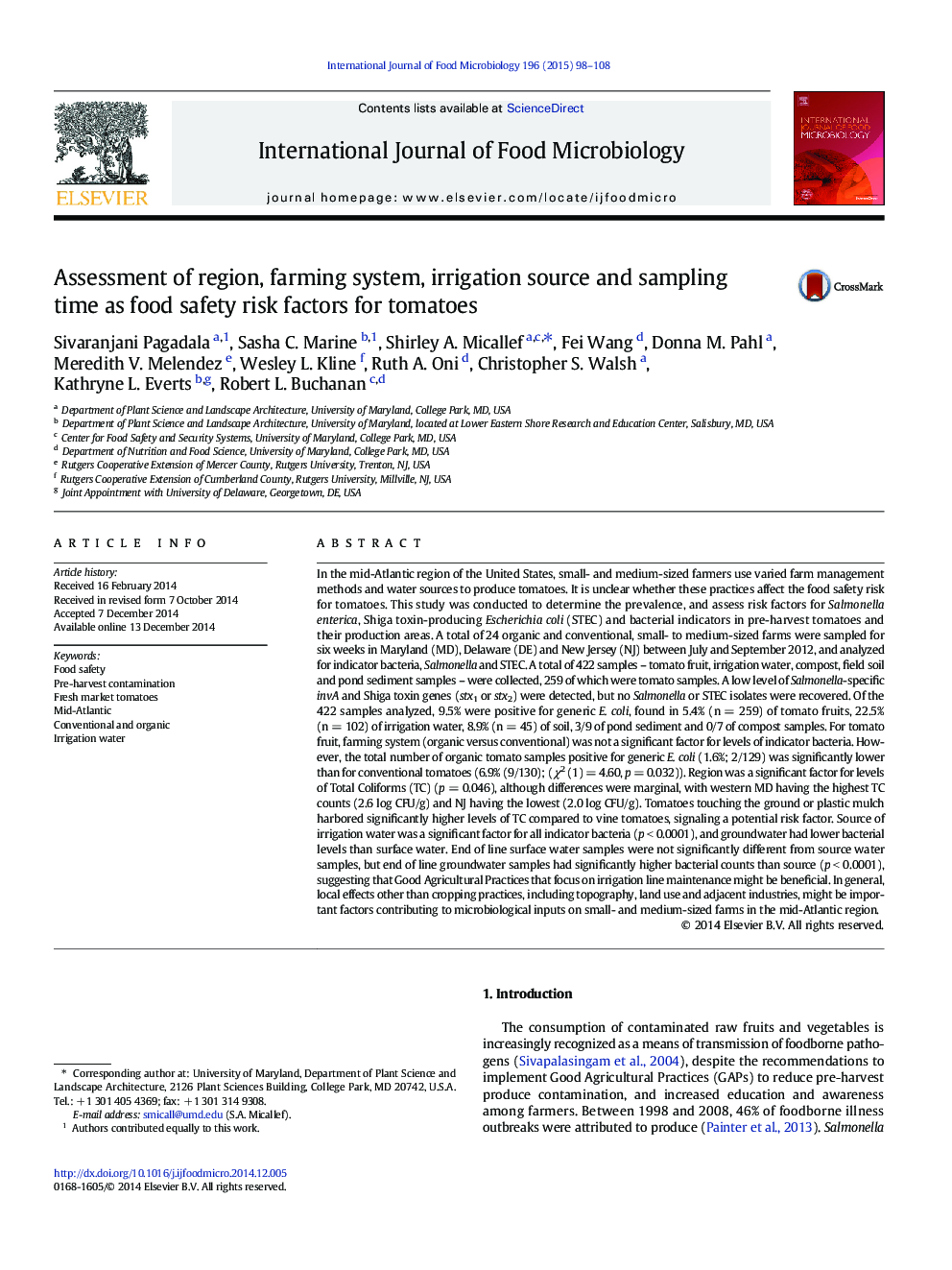| Article ID | Journal | Published Year | Pages | File Type |
|---|---|---|---|---|
| 4366781 | International Journal of Food Microbiology | 2015 | 11 Pages |
•Farming system was not a significant factor for levels of indicator bacteria.•No Salmonella was detected on farms and Shiga toxin gene prevalence was very low.•Tomatoes touching the ground had higher TC counts than tomatoes in the canopy.•Groundwater from end of drip line had higher indicator bacterial counts than source.
In the mid-Atlantic region of the United States, small- and medium-sized farmers use varied farm management methods and water sources to produce tomatoes. It is unclear whether these practices affect the food safety risk for tomatoes. This study was conducted to determine the prevalence, and assess risk factors for Salmonella enterica, Shiga toxin-producing Escherichia coli (STEC) and bacterial indicators in pre-harvest tomatoes and their production areas. A total of 24 organic and conventional, small- to medium-sized farms were sampled for six weeks in Maryland (MD), Delaware (DE) and New Jersey (NJ) between July and September 2012, and analyzed for indicator bacteria, Salmonella and STEC. A total of 422 samples – tomato fruit, irrigation water, compost, field soil and pond sediment samples – were collected, 259 of which were tomato samples. A low level of Salmonella-specific invA and Shiga toxin genes (stx1 or stx2) were detected, but no Salmonella or STEC isolates were recovered. Of the 422 samples analyzed, 9.5% were positive for generic E. coli, found in 5.4% (n = 259) of tomato fruits, 22.5% (n = 102) of irrigation water, 8.9% (n = 45) of soil, 3/9 of pond sediment and 0/7 of compost samples. For tomato fruit, farming system (organic versus conventional) was not a significant factor for levels of indicator bacteria. However, the total number of organic tomato samples positive for generic E. coli (1.6%; 2/129) was significantly lower than for conventional tomatoes (6.9% (9/130); (χ2 (1) = 4.60, p = 0.032)). Region was a significant factor for levels of Total Coliforms (TC) (p = 0.046), although differences were marginal, with western MD having the highest TC counts (2.6 log CFU/g) and NJ having the lowest (2.0 log CFU/g). Tomatoes touching the ground or plastic mulch harbored significantly higher levels of TC compared to vine tomatoes, signaling a potential risk factor. Source of irrigation water was a significant factor for all indicator bacteria (p < 0.0001), and groundwater had lower bacterial levels than surface water. End of line surface water samples were not significantly different from source water samples, but end of line groundwater samples had significantly higher bacterial counts than source (p < 0.0001), suggesting that Good Agricultural Practices that focus on irrigation line maintenance might be beneficial. In general, local effects other than cropping practices, including topography, land use and adjacent industries, might be important factors contributing to microbiological inputs on small- and medium-sized farms in the mid-Atlantic region.
